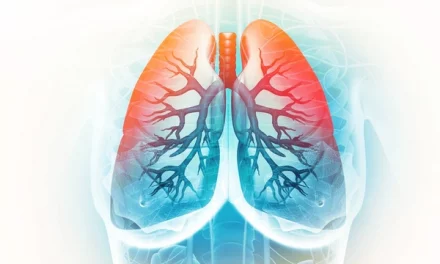Peptides: Mimics Glucagon for Metabolic Regulation
Glucagon, a hormone produced by the pancreas, plays a crucial role in maintaining blood glucose levels by stimulating the release of glucose from the liver into the bloodstream. It works in opposition to insulin, which helps lower blood glucose levels by facilitating glucose uptake into cells. In situations where blood sugar is low, glucagon ensures that the body has a steady supply of glucose to maintain energy levels. However, the regulation of blood sugar is a delicate balance, and dysregulation of glucagon production or its effects can contribute to metabolic disorders such as Type 2 diabetes and hyperglycemia.
Interestingly, certain peptides are able to mimic the actions of glucagon, helping regulate blood glucose levels in a manner similar to the natural hormone. These peptides have gained attention for their potential therapeutic applications, particularly in the management of diabetes and other metabolic conditions. In this article, we will explore how peptides mimic glucagon, the key peptides involved, and the mechanisms through which they regulate blood glucose and improve metabolic health.
What Is Glucagon and Its Role in Blood Sugar Regulation?
Glucagon is a peptide hormone secreted by alpha cells in the pancreas. Its primary function is to increase blood glucose levels when they fall too low. It does this by stimulating the liver to break down glycogen (a stored form of glucose) into glucose and release it into the bloodstream, ensuring that the body has sufficient energy between meals or during periods of fasting.
While insulin lowers blood glucose levels by facilitating glucose uptake into cells, glucagon works to raise blood glucose levels, ensuring a balance between the two hormones. Together, insulin and glucagon regulate blood glucose within a narrow range, which is vital for energy production and overall metabolic health.
However, in conditions like Type 2 diabetes, the body’s cells become resistant to insulin, and glucagon secretion becomes dysregulated, leading to higher than normal blood sugar levels. To restore balance, researchers have focused on developing peptides that can mimic glucagon’s action, improving blood sugar control and supporting metabolic health.
Peptides That Mimic Glucagon’s Action
Several peptides are capable of mimicking glucagon’s actions, helping to regulate glucose metabolism and enhance metabolic health. These peptides primarily focus on stimulating glucose release from the liver, improving insulin sensitivity, and regulating appetite. The most notable peptides that mimic glucagon include:
- GLP-1 (Glucagon-Like Peptide-1):GLP-1 is a hormone released from the intestines in response to food intake. Although GLP-1 does not directly mimic glucagon, it works synergistically with glucagon to regulate blood glucose levels. GLP-1 stimulates insulin secretion from the pancreas and inhibits glucagon release when blood glucose levels are elevated. In this sense, GLP-1 acts to balance the action of glucagon, preventing excessive glucose production when blood sugar is already high.Interestingly, GLP-1 also helps to suppress appetite, slow gastric emptying, and improve insulin sensitivity, making it a valuable therapeutic option for Type 2 diabetes management. GLP-1 receptor agonists, such as liraglutide and semaglutide, are used to mimic the action of GLP-1 and have been shown to improve glycemic control, reduce body weight, and lower the risk of cardiovascular disease.
- GIP (Gastric Inhibitory Polypeptide):GIP is another peptide that works alongside GLP-1 in regulating glucose metabolism. Like GLP-1, GIP is released from the intestines in response to food intake and helps stimulate insulin secretion. However, GIP also has some similarities to glucagon in that it can enhance glucose production from the liver under certain conditions.GIP plays a role in the incretin effect, which refers to the increased insulin response to oral glucose compared to intravenous glucose. GIP mimics some aspects of glucagon’s action by stimulating insulin secretion and improving glucose metabolism, making it an important peptide for managing blood glucose levels, particularly in people with insulin resistance or Type 2 diabetes.
- Glucagon-Like Peptide-2 (GLP-2):While GLP-2 does not directly mimic glucagon, it plays an important role in maintaining the balance between glucose production and insulin secretion. GLP-2 is primarily involved in gut health, improving nutrient absorption and supporting intestinal function. However, recent research has indicated that GLP-2 may have a secondary role in regulating blood glucose by modulating the action of glucagon and other hormones involved in glucose metabolism.GLP-2’s action on the intestines may indirectly support the balanced release of glucose and insulin, helping to maintain stable blood glucose levels. By supporting intestinal health, GLP-2 also contributes to overall metabolic health, which is crucial for individuals managing conditions like diabetes.
- Insulin and Glucagon-Like Peptides:While insulin and glucagon have opposite effects on blood glucose regulation, peptides that mimic insulin and glucagon can have synergistic effects. For example, insulin analogs are used to regulate glucose uptake by cells, while glucagon-like peptides work to modulate glucose production and release from the liver.These dual actions allow for more controlled management of blood sugar levels, especially in patients with diabetes. By improving insulin sensitivity and mimicking glucagon’s ability to regulate glucose release, these peptides help maintain better control over blood glucose levels and reduce the risk of hyperglycemia.
Mechanisms of Action: How Peptides Mimic Glucagon
Peptides that mimic glucagon’s action help regulate blood glucose levels and improve metabolic function through several mechanisms:
- Stimulating Glucose Production in the Liver:
One of glucagon’s primary roles is to stimulate the liver to break down glycogen into glucose and release it into the bloodstream. Peptides like GIP and GLP-1 work synergistically to regulate this process. By promoting liver glucose production when necessary, these peptides help ensure the body has enough energy during fasting or between meals. - Enhancing Insulin Secretion:
Peptides like GLP-1 and GIP stimulate insulin release from the pancreas, which helps lower blood glucose levels after eating. Insulin’s role in facilitating glucose uptake into cells works in opposition to glucagon’s glucose release, creating a balanced regulatory system for blood sugar. - Modulating Appetite and Gastric Emptying:
GLP-1 mimics some aspects of glucagon by regulating appetite and slowing gastric emptying. By promoting feelings of fullness and slowing the digestive process, GLP-1 helps control food intake, which indirectly supports blood glucose regulation and reduces the need for excessive glucagon release. - Improving Insulin Sensitivity:
Some glucagon-mimicking peptides, such as GIP, also enhance insulin sensitivity, which helps the body more effectively respond to insulin and regulate blood glucose levels. By improving insulin action, these peptides reduce the risk of insulin resistance and maintain metabolic health.
Benefits of Peptides That Mimic Glucagon
The use of peptides that mimic glucagon offers several key benefits for metabolic health, particularly in managing diabetes and improving blood glucose control:
- Better Blood Glucose Regulation:
By stimulating insulin secretion and enhancing glucose production when necessary, peptides that mimic glucagon help maintain stable blood sugar levels and reduce the risk of hyperglycemia or hypoglycemia. - Reduced Risk of Insulin Resistance:
Peptides like GLP-1 and GIP improve insulin sensitivity, reducing the likelihood of insulin resistance and Type 2 diabetes. These peptides help the body use glucose more effectively and reduce the need for excessive insulin production. - Improved Weight Management:
Many glucagon-like peptides, particularly GLP-1, also have appetite-suppressing effects, which can contribute to weight loss. By promoting satiety and reducing hunger, these peptides help individuals maintain a healthy weight, which is crucial for preventing and managing diabetes. - Cardiovascular Benefits:
GLP-1 analogs, such as liraglutide and semaglutide, have been shown to reduce the risk of cardiovascular disease in individuals with Type 2 diabetes. By improving blood glucose control and reducing risk factors such as high blood pressure and cholesterol, these peptides support overall heart health.
Safety and Considerations
While peptides that mimic glucagon offer significant benefits, they should be used under the guidance of a healthcare provider. Peptides like GLP-1 analogs and GIP may have side effects such as gastrointestinal discomfort, nausea, or injection site reactions. Proper dosing, sourcing from reputable suppliers, and regular monitoring are essential to ensure safety and effectiveness.
Final Thoughts
Peptides that mimic glucagon play an important role in regulating blood glucose levels, improving insulin sensitivity, and supporting metabolic health. By enhancing glucose production, promoting insulin secretion, and regulating appetite, these peptides provide a powerful tool for managing diabetes and maintaining overall metabolic balance. As research into peptide therapies continues, their potential for improving blood sugar control and supporting long-term health will only grow, offering new possibilities for individuals with metabolic disorders.
Peptides: Mimics Glucagon for Metabolic Regulation





